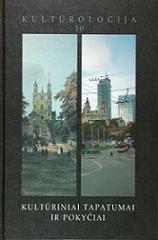Religinė Velnio Įvaizdžio Prasmė Lietuvių Liaudies Tradicijoje
Religious Meaning Of The Devil‘S Image In Lithuanian Folk Tradition
Author(s): Elvyra UsačiovaitėSubject(s): Anthropology
Published by: Lietuvos kultūros tyrimų
Keywords: Lithuanian folklore; devil; Pagan gods; Christianity
Summary/Abstract: The image of the devil in traditional Lithuanian culture has developed in the course of history; consequently, three layers of its meaning can be separated. The first, archaic and reaching the oldest times, conception of the devil is related to the universal principle of decay, comprising both the nature and humans. That is why the devil has been attributed to the deities of the kingdom of the dead. Another conception has formed with the spread of Christianity, when all the Pagan gods of agriculture and stock-raising became identified as evil spirits. Absorbing the features of the Pagan deities, the devil acquired the features of a generous and silly creature in Lithuanian folk literature. The third, most significant, devil‘s image is Christian. The devil is an anthropomorphic-zoomorphic creature, which personifies evil. As it was believed in 18–19th centuries, it actually manifested itself in the environment of the rural people, especially when a person fell, i.e. made one of the seven deadly sins.
Journal: Kultūrologija
- Issue Year: 2003
- Issue No: 10
- Page Range: 402-435
- Page Count: 33
- Language: Lithuanian

